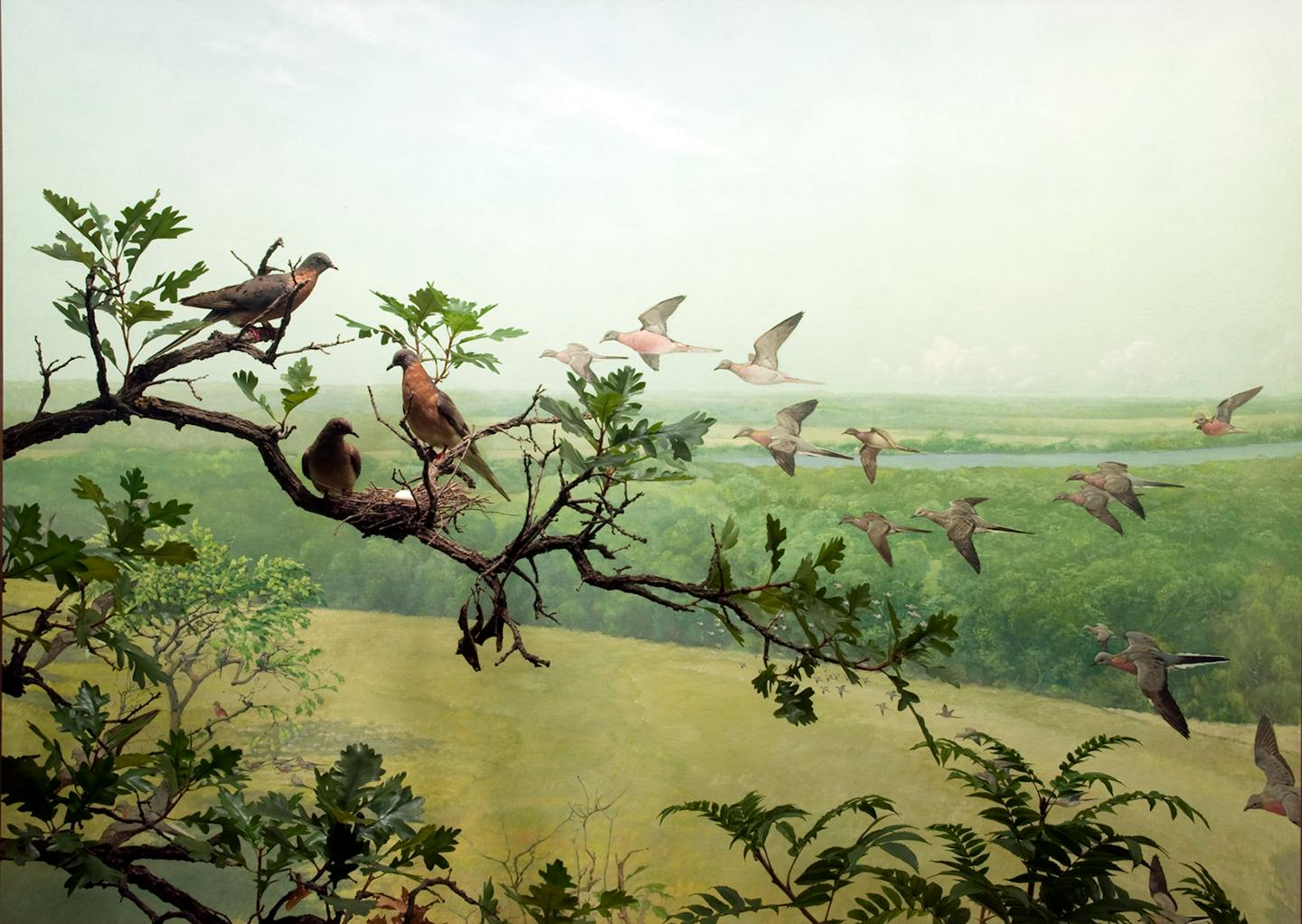The history of the extinct passenger pigeon has a local footnote.
In 1895 the last nest and egg of that species to be found in the wild were collected near Minneapolis, exact location unknown.
This information (and that to follow) comes from a 2014 issue of the magazine BirdWatching. It was marking the 100-year anniversary of the death of the last pigeon, a zoo captive named Martha. She died, and the species was extinct.
BirdWatching was published in Wisconsin, which, by the way, has a significant place in the pigeon's history.
When European explorers put feet on North American soil it is estimated that passenger pigeons numbered between 3 billion and 5 billion birds. Billion with a B.
There are stories galore from people who watched flocks of pigeons fly overhead. They watched pigeons until they couldn't do it any longer and finally went inside for supper.
If they went out the next morning, coffee in hand, it was possible that the sky yet was filled with pigeons. Audubon wrote of a flock that took three days to pass.
The time elapsed from Europeans' arrival in North America to Martha flat on the floor of her cage was 422 years.
The passenger pigeon, as we know, received from us a very strong push in the wrong direction. Birds were killed by the trainload, literally, birds shot or trapped, loaded onto trains, and shipped east for dinner.
Extinction is a rare event. Natural extinction can take many thousands of years to bring a species to zero.
The normal, natural, historic rate of extinction for vertebrates is two species out of 10,000 species over 100 years. That formula is taken from the American Association for the Advancement of Science (AAAS).
This extinction rate is twice as high as the previous widely used estimate. That, too, comes from the AAAS. Everything is speeding up.
Using the previous background rate, the number of species that have gone extinct in the past century would have taken up to 10,000 years, depending on which species.
Why so many so quickly? Is it obvious to say too many of us aren't paying attention, and don't give a damn? Deep sigh.
Meanwhile, over in Wisconsin, in the central part of the state, in 1871, pigeons nesting were said to cover 850 square miles. It was estimated that the total number of birds, adults and squabs was 136 million.
A few years later, in 1882, birds nesting in Wisconsin and Pennsylvania were said to be only a few million. Only.
Eight years later the total population, all of it, was estimated at a few thousand birds. The beat went on.
In the late 1800s, a prescient Milwaukee man, David Whittaker, began a captive flock of passenger pigeons. Some of them eventually went to a Charles Whitman at the University of Chicago.
Whitman sent Martha to the Cincinnati Zoo, where she joined a passenger pigeon named George. George died in 1911.
And, Martha, from a family of billions, was alone.
Lifelong birder Jim Williams can be reached at woodduck38@gmail.com.
543 land vertebrates extinct in 20th century
Scientists at the Stanford Woods Institute for the Environment in 2020 estimated that in the entire 20th century, at least 543 land vertebrate species went extinct worldwide. Biologist Paul Ehrlich and co-authors estimate that nearly the same number of species are likely to go extinct in the next two decades alone. (Vertebrates are animals with a backbone or spinal column.)
Source: news.stanford.edu
Birds' future could be bleak
"The size of the extinction crisis (for birds) caused by climate change will be directly related to the degree of global warming. A global average temperature rise of 2°C in the next century will almost certainly lead to numerous extinctions, but leave open some practical management options for the conservation of biodiversity. Temperature rises beyond this level are predicted to lead to catastrophic extinction rates, with few management options and a bleak future for both biodiversity and people."
Source: BirdLife International, datazone.birdlife.org







